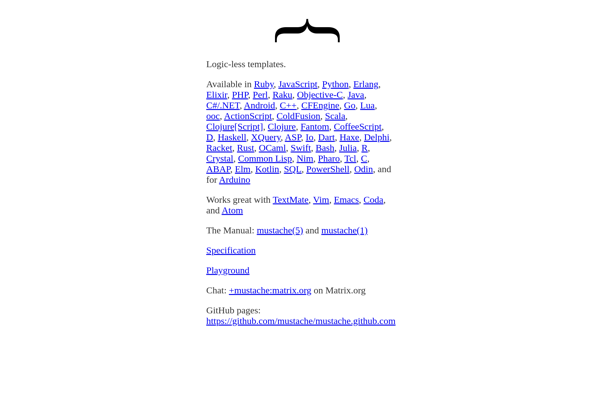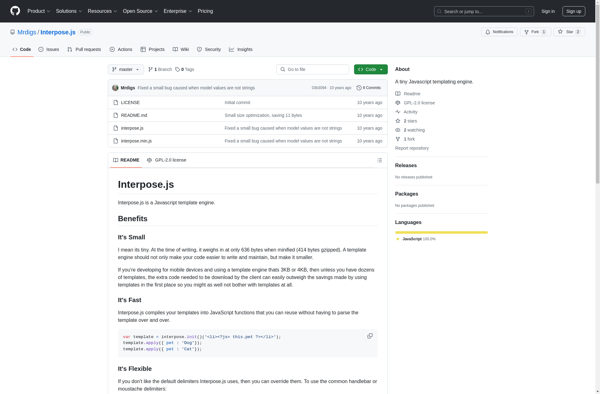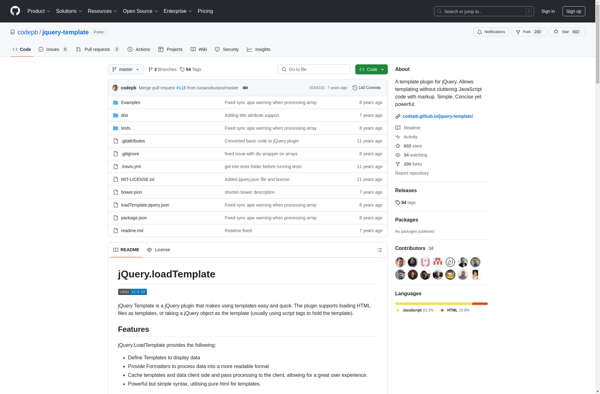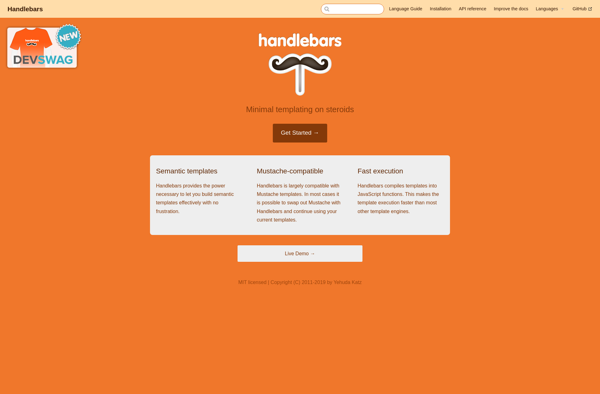Dust.js
Dust.js: Lightweight JavaScript Templating Library
A lightweight JavaScript templating library for client-side and server-side rendering, providing a simple syntax and complete control of HTML output with high extensibility.
What is Dust.js?
Dust.js is an open-source JavaScript templating library designed to help developers quickly build well-structured web application templates. It was originally created at LinkedIn and later donated to the open source community.
Some key features of Dust.js include:
- Lightweight runtime with minimal overhead
- Clean and easy-to-read syntax
- Support for conditional blocks, looping, partials, helpers, and more
- Asynchronous and non-blocking rendering for improved performance
- Works in both Node.js and browser environments
- Compiles templates to reusable JavaScript functions
- Extensibility through custom helpers and filters
- Active open source community behind continued development
Dust.js makes it easy to create maintainable views that can be shared across both server and client code. It has good documentation, an approachable learning curve for basic usage, and scales well to handle complex application templating needs.
Some popular web frameworks like Geddy and Tower.js use Dust.js as their default template engine. Many developers also use it standalone or integrate it with Express.js and other Node.js web frameworks. Overall, it strikes a nice balance between feature richness and simplicity of use.
Dust.js Features
Features
- Template inheritance
- Automatic escaping for security
- Asynchronous rendering
- Streaming
- Client-side and server-side rendering
- Partial templates
- Conditionals and loops
- Helpers for formatting
- Extensible with custom helpers and filters
Pricing
- Open Source
Pros
Cons
Official Links
Reviews & Ratings
Login to ReviewThe Best Dust.js Alternatives
Top Development and Javascript Libraries and other similar apps like Dust.js
Here are some alternatives to Dust.js:
Suggest an alternative ❐Mustache

Interpose.js

Jquery-template

Handlebars
